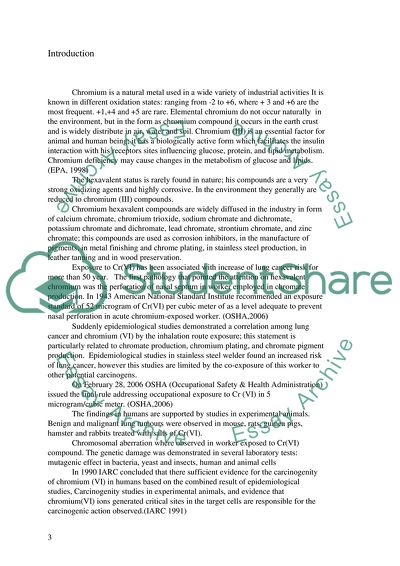Cite this document
(Sufficient Evidence for the Carcinogenicity of Chromium Research Paper, n.d.)
Sufficient Evidence for the Carcinogenicity of Chromium Research Paper. Retrieved from https://studentshare.org/environmental-studies/1706938-1hexavalent-chromium-and-2dental-mercury
Sufficient Evidence for the Carcinogenicity of Chromium Research Paper. Retrieved from https://studentshare.org/environmental-studies/1706938-1hexavalent-chromium-and-2dental-mercury
(Sufficient Evidence for the Carcinogenicity of Chromium Research Paper)
Sufficient Evidence for the Carcinogenicity of Chromium Research Paper. https://studentshare.org/environmental-studies/1706938-1hexavalent-chromium-and-2dental-mercury.
Sufficient Evidence for the Carcinogenicity of Chromium Research Paper. https://studentshare.org/environmental-studies/1706938-1hexavalent-chromium-and-2dental-mercury.
“Sufficient Evidence for the Carcinogenicity of Chromium Research Paper”. https://studentshare.org/environmental-studies/1706938-1hexavalent-chromium-and-2dental-mercury.


